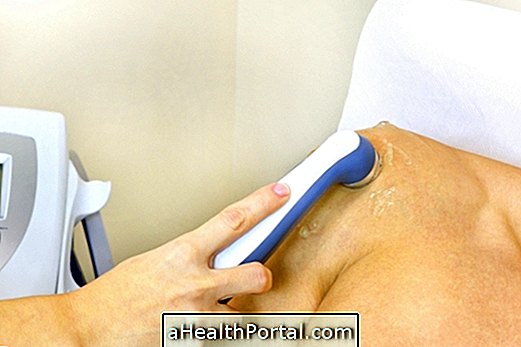Cardiopulmonary bypass is a technique that is widely used in open heart surgery, such as replacing a valve, transplantation, or revascularization of the heart muscle, as it replaces the work of the heart and lungs. Thus, the doctor can perform the surgery without worrying about the blood circulation.
In addition, this technique also prevents the passage of blood through the lung, which reduces the chances of a pulmonary embolism, as there is no risk of trauma to the heart causing clots that end up being transported to the lungs.

How it works
Extracorporeal circulation is done by a set of machines that try to replace and mimic the functioning of the blood circulation in the body. In this way, it is a technique that includes several steps and components:
- Removal of Venous Blood : A catheter is placed near the heart to remove venous blood from the whole body, preventing it from reaching the right atrium of the heart;
- Reservoir : the blood removed is collected in a reservoir about 50 to 70 cm below the heart level, which maintains a continuous flow through the machine and still allows the physician to add medicines or blood transfusions to the circulation;
- Oxygenator : then the blood is sent to an apparatus called an oxygenator, which removes excess carbon dioxide from the venous blood and adds oxygen to make it into arterial blood;
- Temperature controller : After exiting the oxygenator, the blood goes to a temperature controller, which allows the doctor to maintain a temperature equal to the body temperature or reduce it, when it needs to cause a cardiac arrest, for example;
- Pump and Filter : Before returning to the body, blood passes through a pump that replaces the force of the heart, pushing the blood through a filter that removes clots and other gases that may have formed during the circulation outside the body;
- Microfilters : after the filter, there is also a set of microfilters that remove smaller particles, which, although they do not cause problems in the circulation of the body, can pass through the blood-brain barrier and reach the brain;
- Return of the arterial blood to the body : finally, the blood returns to enter the body, directly to the aorta, being distributed throughout the body.
Throughout the process, there are several pumps that help the blood circulate so that it does not stand still and increase the risk of clot formation.
Possible Complications
Although it is a widely used technique, relatively simple and with many benefits for cardiac surgery, extracorporeal circulation can cause some complications. One of the most frequent complications is the development of systemic inflammation, in which the body responds with blood cells to fight an infection. This happens because the blood comes in contact with unnatural surfaces inside the machine, which ends up destroying several of the blood cells and provoking the inflammatory response in the body.
In addition, because of the changes in speed and temperature that the blood can pass inside the apparatus also increases the risk of clot formation and, therefore, after this type of surgeries is very important to be alert to the appearance of embolisms in the lung or until stroke . However, since after surgery, it is necessary to stay in the ICU, normally all vital signs are being monitored to avoid this type of complications.


















-o-que--quando-fazer-e-como-funciona.jpg)



